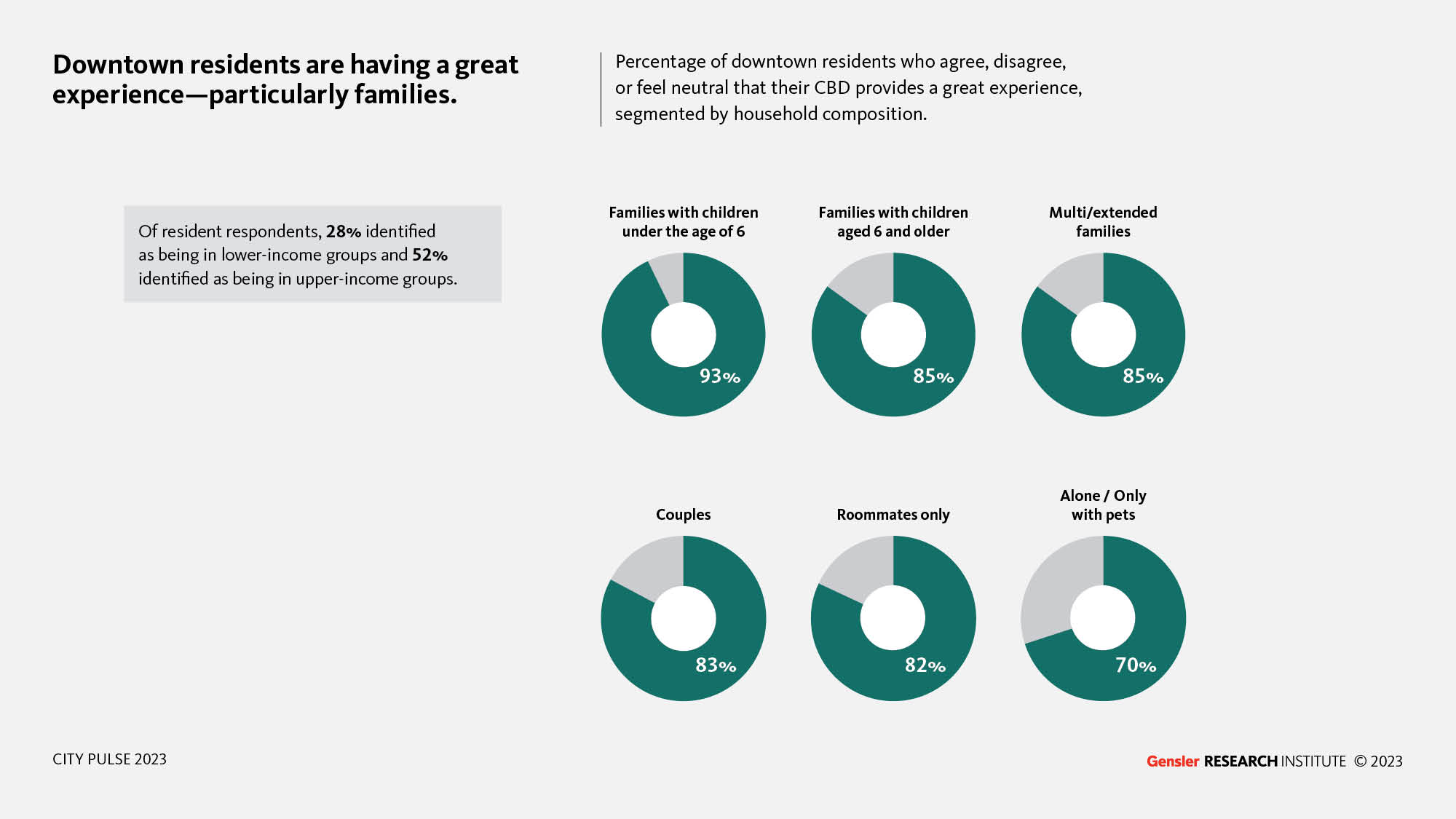Over three years after the pandemic began, central business districts (CBDs) are grappling with complex, intertwined challenges related to business closures, reduced foot traffic, and, in some areas, widespread office vacancies. It’s clear that downtown revitalization efforts must prioritize the immediate concerns of economic recovery while also anticipating the long-term effects of the pandemic on urban life — many of which will likely unfold over decades.
With that in mind, we begin this report by providing an overview of the current state of CBDs, pulled from the perspectives of 26,000 urbanites in 53 cities across six global regions. The remaining sections of the study are devoted to three different downtown personas: residents (people who live in their CBDs), employees (people who are employed at a business or organization in their CBD), and local visitors (people who neither live nor work in their CBD but live in the city proper). By appealing to the broad mix of people who live, work in, and visit their CBDs, urban centers can enter a new age of vitality.
